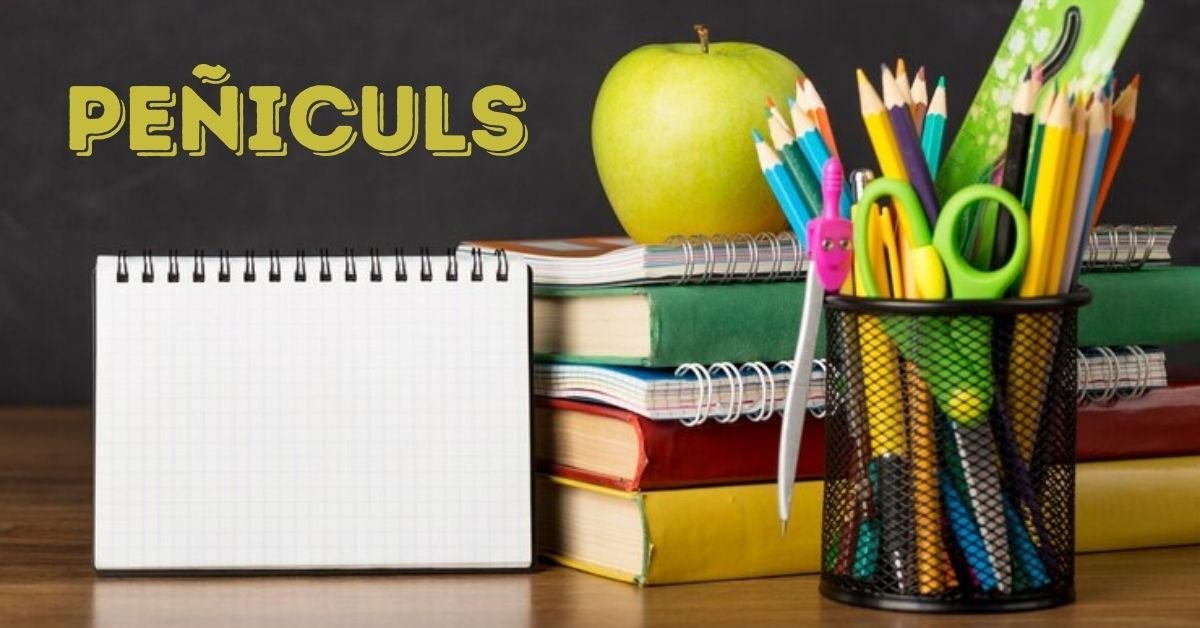Peñiculs might sound unfamiliar to many, but their significance spans across various cultures and industries. These unique objects have a rich history and diverse applications that make them fascinating to explore. Whether you’re a collector, a fashion enthusiast, or simply curious about unique cultural items, this guide will delve into everything you need to know about peñiculs.
What Are Peñiculs?
Peñiculs are decorative or functional items that hold cultural, artistic, or practical value. They can range from traditional handcrafted pieces to modern designs, serving various purposes in everyday life and special occasions. The term “peñiculs” encompasses a wide array of objects, each with its own distinct characteristics and uses.
Importance of Peñiculs
Peñiculs play a significant role in many cultures, often symbolizing heritage, craftsmanship, and tradition. They are not only valued for their aesthetic appeal but also for their cultural and historical significance. Understanding peñiculs offers a glimpse into the traditions and practices of different societies, making them an important subject of study and appreciation.
History of Peñiculs
The origins of peñiculs can be traced back to ancient civilizations where they were used for various purposes, from religious rituals to everyday utility. Over time, peñiculs have evolved, adapting to changing cultural norms and technological advancements. This evolution reflects the dynamic nature of human creativity and the ongoing dialogue between tradition and modernity.
Origins
The earliest peñiculs were often made from natural materials available in the environment, such as wood, stone, and metal. These items were meticulously crafted by artisans who passed down their skills through generations. The designs and uses of these early peñiculs were deeply rooted in the cultural practices of the time.
Evolution Over Time
As societies progressed, the materials and techniques used to create peñiculs evolved. The introduction of new materials like glass and plastic, along with advances in manufacturing technology, allowed for more intricate and diverse designs. Today, peñiculs can be found in various forms, reflecting both traditional craftsmanship and contemporary innovation.
Types of Peñiculs
Peñiculs can be broadly categorized into traditional and modern types, each with its own unique characteristics and appeal.
Traditional Peñiculs
Traditional peñiculs are often handcrafted using techniques passed down through generations. They embody the cultural heritage of the regions they originate from and are typically made from natural materials. These items are highly valued for their authenticity and the skill involved in their creation.
Modern Peñiculs
Modern peñiculs, on the other hand, often incorporate contemporary designs and materials. They may be mass-produced or individually crafted, offering a wide range of styles to suit different tastes. While they may lack the historical depth of traditional peñiculs, modern peñiculs are appreciated for their innovation and versatility.
How Peñiculs Are Made
The creation of peñiculs involves a detailed process that varies depending on the type and intended use of the item. Understanding this process offers insight into the craftsmanship and creativity behind these fascinating objects.
Materials Used
Peñiculs can be made from a variety of materials, including wood, metal, glass, plastic, and fabric. The choice of material depends on the desired characteristics of the final product, such as durability, appearance, and functionality. Traditional peñiculs often use natural materials, while modern ones may incorporate synthetic materials for added versatility.
Manufacturing Process
The manufacturing process for peñiculs can range from simple handcrafting techniques to complex industrial production methods. Traditional peñi’culs are usually handmade, involving skills like carving, weaving, or metalworking. Modern peñiculs may be produced using advanced machinery and technology, allowing for greater precision and consistency.
Cultural Significance of Peñiculs
Peñiculs hold a deep cultural significance in many societies, often serving as symbols of identity, heritage, and tradition. They are used in various cultural practices, from everyday activities to important rituals and ceremonies.
In Different Cultures
In many cultures, peñiculs are integral to daily life and social practices. They can be found in households, used in religious ceremonies, or worn as part of traditional attire. The designs and uses of peñi’culs vary widely across cultures, each reflecting the unique values and traditions of the community.
Symbolism and Meaning
Peñiculs often carry symbolic meanings, representing concepts such as prosperity, protection, or status. These symbolic meanings can be embedded in the design, materials, or the way the peñi’culs are used. Understanding these symbols offers deeper insight into the cultural context of peñi’culs.
Popular Uses of Peñiculs
Peñiculs are versatile items with a wide range of applications in everyday life and special occasions. Their uses can vary greatly depending on their design and cultural context.
Daily Life
In daily life, peñiculs can serve practical functions such as tools, utensils, or decorative items. They add a touch of cultural heritage to everyday activities, reminding users of their roots and traditions.
Special Occasions
Peñi’culs are often used in special occasions and ceremonies, such as weddings, festivals, and religious rituals. They can serve as symbolic objects, gifts, or accessories, adding a layer of meaning and significance to the event.
Peñiculs in Fashion
Peñiculs have found a place in the fashion world as unique accessories that add a touch of cultural flair to contemporary outfits. They can be incorporated into various fashion styles, from traditional attire to modern ensembles.
Peñiculs as Accessories
As fashion accessories, peñi’culs can be worn as jewelry, hair ornaments, or clothing embellishments. Their unique designs and cultural significance make them stand out, adding a distinctive touch to any outfit.
Trends and Styles
Fashion trends involving peñiculs often blend traditional elements with modern aesthetics. This fusion creates unique styles that appeal to those looking to express their cultural identity or appreciation for different cultures through fashion.
Peñiculs in Entertainment
Peñi’culs also appear in various forms of entertainment, including movies, TV shows, literature, and art. They add authenticity and cultural depth to creative works, enhancing the storytelling experience.
In Movies and TV Shows
In visual media, peñiculs can be used as props or costumes, contributing to the setting and character development. They help create a realistic portrayal of different cultures and historical periods, enriching the viewer’s experience.
In Literature and Art
In literature and art, peñiculs often symbolize themes such as heritage, tradition, and identity. They can be depicted in various ways, from detailed descriptions in novels to prominent features in visual artworks.
Collecting Peñiculs
Collecting peñiculs is a hobby that attracts many enthusiasts who appreciate their cultural and artistic value. It offers a way to preserve and celebrate the heritage and craftsmanship embodied in these items.
Why People Collect Them
People collect peñiculs for various reasons, including their beauty, cultural significance, and historical value. Collectors often enjoy the challenge of finding unique pieces and the satisfaction of building a diverse collection.
Tips for Starting Your Collection
If you’re interested in collecting peñiculs, start by researching the different types and their cultural backgrounds. Attend cultural events, visit museums, and connect with other collectors to gain insights and find unique pieces. Be mindful of the authenticity and provenance of the items you collect to ensure they hold genuine cultural and historical value.
Care and Maintenance of Peñiculs
Proper care and maintenance are essential to preserving the beauty and longevity of peñi’culs. Different materials and designs may require specific handling and cleaning techniques.
Cleaning Tips
To clean peñiculs, use appropriate methods based on the material. For example, wooden peñiculs may require gentle dusting and occasional polishing, while metal peñi’culs might need regular polishing to prevent tarnish. Always avoid harsh chemicals and handle delicate items with care to prevent damage.
Conclusion
Peñiculs are more than just decorative objects; they are rich in cultural significance and artistic value. Whether you’re drawn to their history, craftsmanship, or unique designs, understanding peñi’culs offers a fascinating journey into the traditions and creativity of different cultures. By appreciating and preserving these items, we can keep the cultural heritage they represent alive for future generations.
FAQs
What are peñiculs used for?
Peñiculs can be used for various purposes, including decoration, cultural rituals, and practical functions in daily life.
How can I identify a genuine traditional peñicul?
Research the cultural background, materials, and craftsmanship of traditional peñi’culs. Authentic pieces are usually handmade using traditional techniques and natural materials.
Are modern peñi’culs less valuable than traditional ones?
Not necessarily. Modern peñiculs can be valuable due to their innovative designs and the materials used. The value often depends on the craftsmanship and uniqueness of the piece.
Can peñiculs be used in contemporary fashion?
Yes, peñicul’s are popular in fashion as unique accessories that add a cultural touch to modern outfits. They can be worn as jewelry, hair ornaments, or clothing embellishments.
How should I store my peñicul collection?
Store peñi’culs in a cool, dry place away from direct sunlight. Use soft, padded containers for delicate items and regularly inspect them for any signs of damage or wear.











